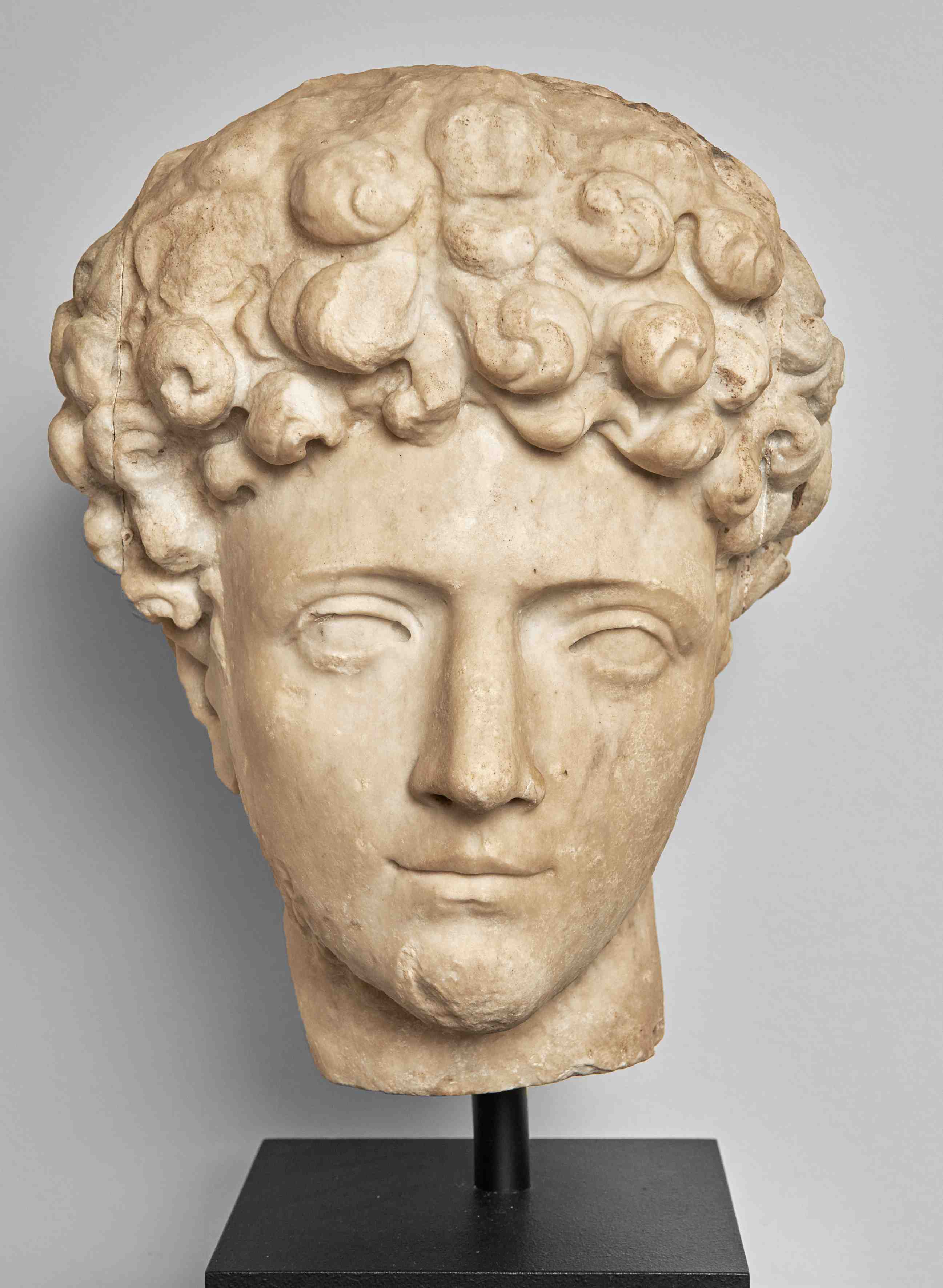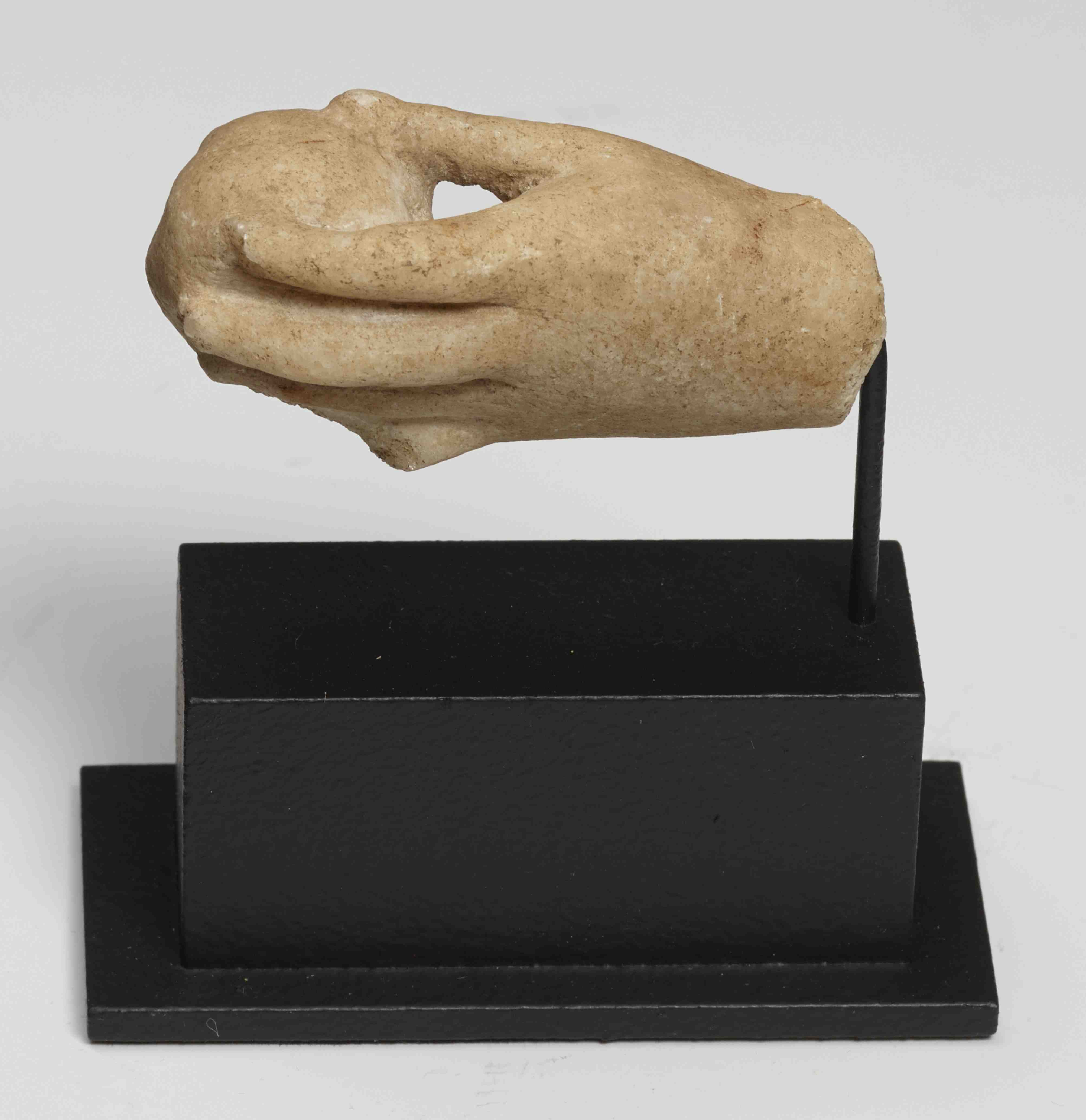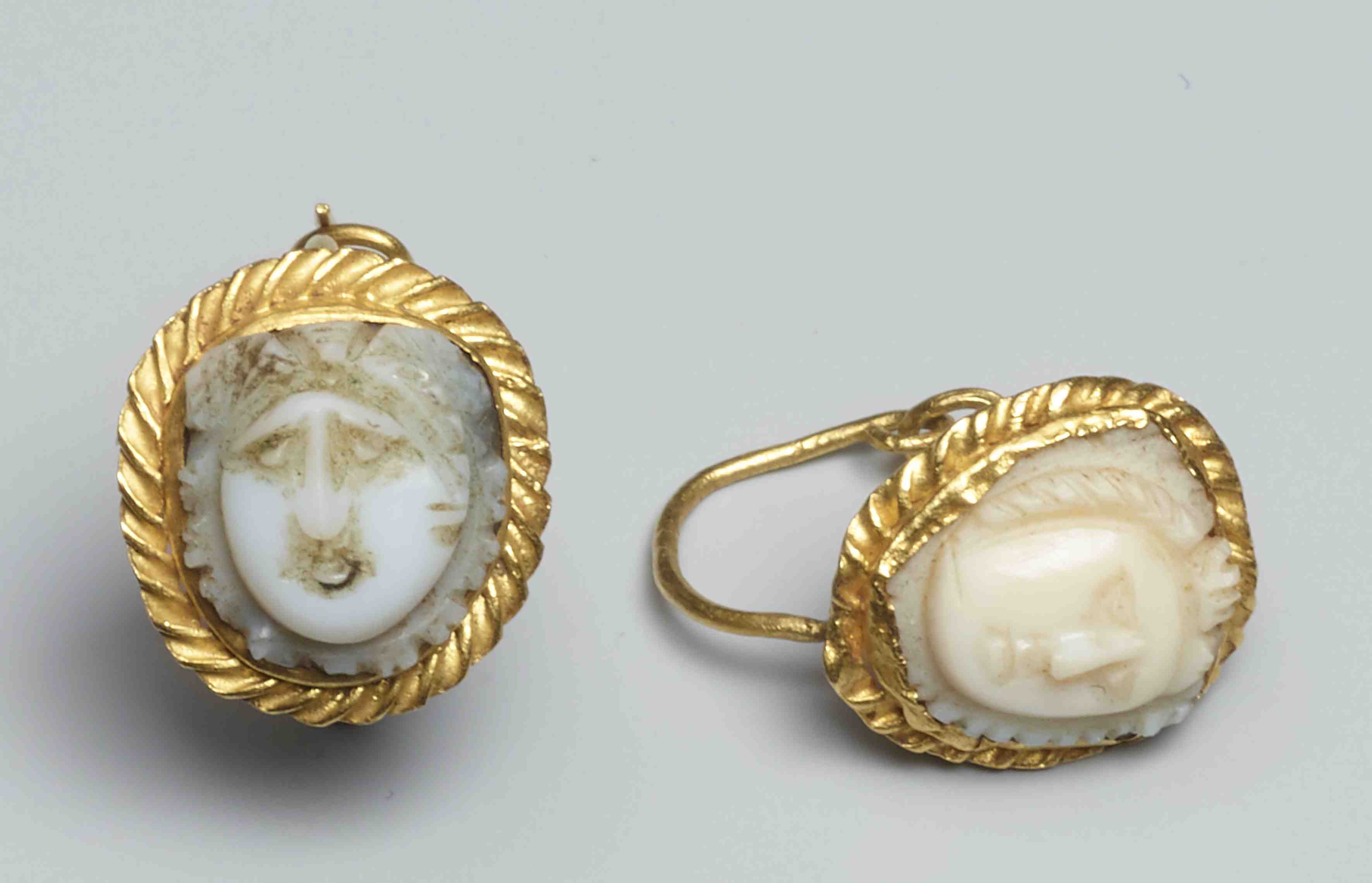Beautifully carved in the round from fine crystalline marble, the preserved left hand of a man gripping the hilt of his sheathed sword. The hilt is incised with an abstract wavy pattern, while only the squared edge of the scabbard is visible before it is engulfed by the thick mantle which is draped over the man’s wrist and forearm, descending in a vertical swathe rendered in symmetrical folds. The modelling of the knuckles and flesh of the hand is a testament to the high quality of carving. Traces of a rectangular strut remain at the near the bottom of the drapery along its inner surface, presumably to connect it to the leg of the man to whom the hand and sword belong.
Note
The sculptural format of standing military man was widespread throughout the Roman world, typically showing the subject frontally oriented in a loose contrapposto frequently with one hand extended and the other gripping a sword hilt as in the present example. Because of its extraordinary versatility, the pose was used for emperors (e.g. the portrait of Titus from Herculaneum, now in the Museo Nazionale di Napoli, inv. no. 6059) to mythological figures (e.g. Mars from a group from Ostia in the Museo Nazionale delle Terme) to honoured military men. The drapery does little to elucidate the identity of the subject, or even the rest of his wardrobe – he could have been wearing full military equipment or nude but for the mantle (as in the imposing bronze Trebonianus Gallus in the Metropolitan Museum of Art, inv. no. 05.30). The sword was the crucial aspect, emphasising his military background over civilian service.









